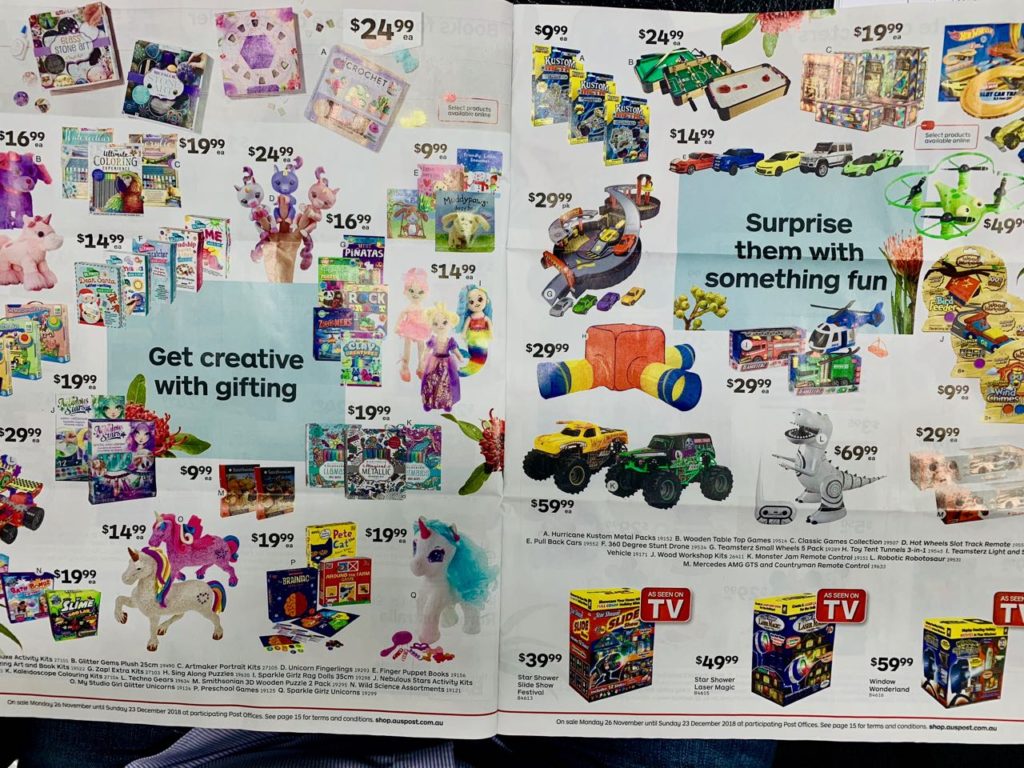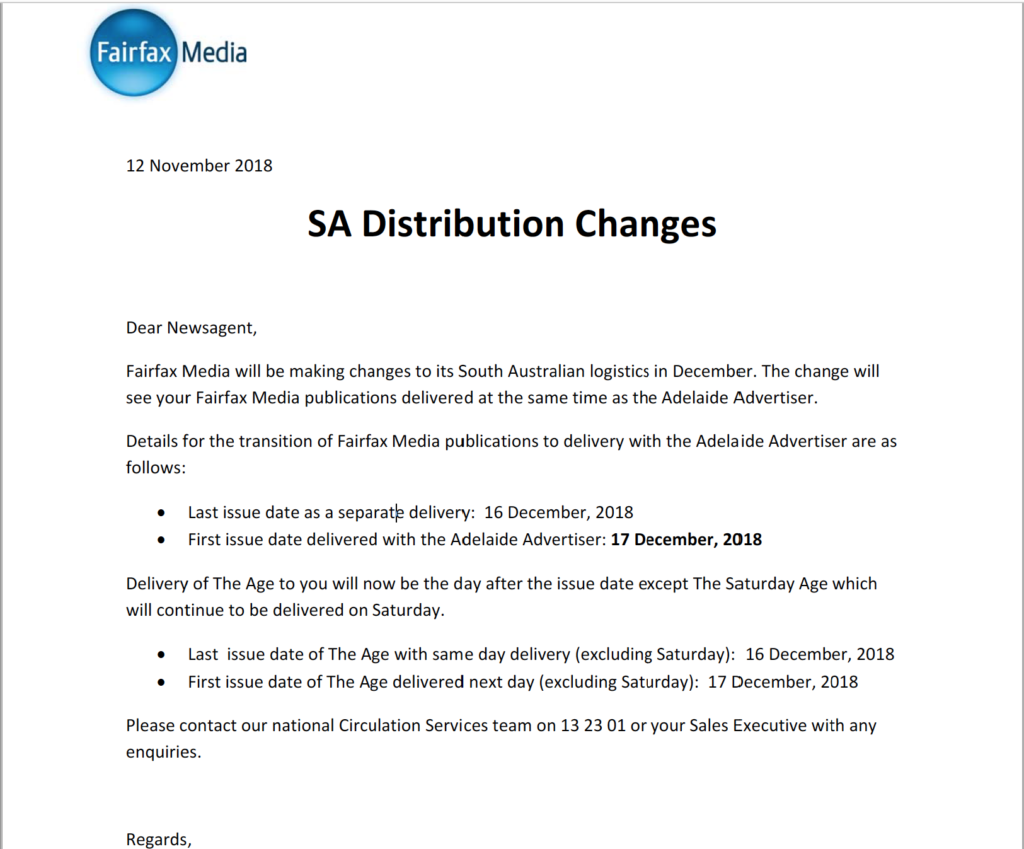What a business pays employees is determined first by the classification of the role for it is the classification that sets the level on the pay table. It is vital that business owners understand classifications and manage people according to their classification. Employers who do not pay to classifications open themselves to challenge through FairWork processes for back pay.
Here is a copy of some of the classifications information from the Fair Work website for the General Retail Award. Please take particular note of what is in Retail Level 3 and the note about opening and closing. This is important:
Schedule B—Classifications
B.1 Retail Employee Level 1
B.1.1 An employee performing one or more of the following functions at a retail establishment:
- the receiving and preparation for sale and or display of goods in or about any shop;
- the pre-packing or packing, weighing, assembling, pricing or preparing of goods or provisions or produce for sale;
- the display, shelf filling, replenishing or any other method of exposure or presentation for sale of goods;
- the sale or hire of goods by any means;
- the receiving, arranging or making payment by any means;
- the recording by any means of a sale or sales;
- the wrapping or packing of goods for despatch and the despatch of goods;
- the delivery of goods;
- window dressing and merchandising;
- loss prevention;
- demonstration of goods for sale;
- the provision of information, advice and assistance to customers;
- the receipt, preparation, packing of goods for repair or replacement and the minor repair of goods;
- all directly employed persons engaged in retail stores in cleaning, store greeting, security, lift attending, store cafeterias and food services;
- Clerical Assistants functions Level 1; or
- work which is incidental to or in connection with any of the above.
B.1.2 Retail Employees will undertake duties as directed within the limits of their competence, skills and training including incidental cleaning. The cleaning of toilets is not incidental cleaning except in the case of a take away food establishment.
B.1.3 Indicative job titles which are usually within the definition of a Retail Employee Level 1 are:
- Shop Assistant,
- Clerical Assistant,
- Check-out Operator,
- Store Worker,
- Reserve Stock Hand,
- Driver,
- Boot/Shoe Repairer (Not Qualified),
- Window Dresser (Not Qualified),
- LPO,
- Photographic Employee,
- Store Greeter,
- Assembler,
- Ticket Writer (Not Qualified),
- Trolley Collector,
- Video Hire Worker,
- Telephone Order Salesperson,
- Door-to-door Salesperson, or Retail Outdoor Salesperson, and,
- Demonstrator and/or Merchandiser not elsewhere classified (including a Demonstrator and/or Merchandiser who is not a direct employee of the retailer).
B.1.4 Clerical Assistant means an employee accountable for clerical and office tasks as directed within the skill levels set out.
B.1.5 Employees at this level may include the initial recruit who may have limited relevant experience. Initially work is performed under close direction using established practices, procedures and instructions.
B.1.6 Such employees perform routine clerical and office functions requiring an understanding of clear, straightforward rules or procedures and may be required to operate certain office equipment. Problems can usually be solved by reference to established practices, procedures and instructions.
B.1.7 Employees at this level are responsible and accountable for their own work within established routines, methods and procedures and the less experienced employee’s work may be subject to checking at all stages. The more experienced employee may be required to give assistance to less experienced employees in the same classification.
B.1.8 Indicative typical duties and skills at this level may include:
- reception/switchboard, e.g. directing telephone callers to appropriate staff, issuing and receiving standard forms, relaying internal information and initial greeting of visitors;
- maintenance of basic records;
- filing, collating, photocopying etc;
- handling or distributing mail including messenger service;
- recording, matching, checking and batching of accounts, invoices, orders, store requisitions etc; or
- the operation of keyboard and other allied equipment in order to achieve competency as prescribed in Level 2.
B.2 Retail Employee Level 2
B.2.1 An employee performing work at a retail establishment at a higher skill level than a Retail Employee Level 1.
B.2.2 Indicative job titles which are usually within the definition of a Retail Employee Level 2 include:
- Forklift Operator,
- Ride on Equipment Operator.
B.3 Retail Employee Level 3
B.3.1 An employee performing work at a retail establishment at a higher level than a Retail Employee Level 2.
B.3.2 Indicative of the tasks which might be required at this level are the following:
- Supervisory assistance to a designated section manager or team leader,
- Opening and closing of premises and associated security,
- Security of cash, or
- Fitting of surgical corset.
B.3.3 Indicative job titles which are usually within the definition of a Retail Employee 3 include:
- Machine operators,
- 2IC to Dept Manager,
- Senior Salesperson,
- Corsetiere,
- Driver Selling Stock,
- Cook (Not Qualified) in a cafeteria,
- Senior LPO, including an armed LPO,
- LPO Supervisor,
- Designated second-in-charge of a section (i.e. senior sales assistant),
- Designated second-in-charge to a service supervisor, or
- Person employed alone, with responsibilities for the security and general running of a shop.
B.4 Retail Employee Level 4
B.4.1 An employee performing work at a retail establishment at a higher level than a Retail Employee Level 3.
B.4.2 Indicative of the tasks which might be required at this level are the following:
- Management of a defined section/department,
- Supervision of up to 4 sales staff (including self),
- Stock control,
- Buying/ordering requiring the exercise of discretion as to price, quantity, quality etc.,
- An employee who is required to utilise the skills of a trades qualification for the majority of the time in a week, or
- Clerical functions Level 2.
B.4.3 Indicative job titles which are usually within the definition of a Retail Employee 4 include:
- An Assistant, Deputy, or 2IC Shop Manager of a shop without Departments,
- An employee who is required to utilise the skills of a trades qualified person for the majority of the time in a week. This includes: Butcher, Baker, Pastry Cook, Florist,
- An employee who has completed an appropriate trades course or holds an appropriate Certificate III and is required to use their qualifications in the course of their work,
- A Qualified Auto Parts and Accessories Salesperson,
- A Window Dresser (Cert III or equivalent experience),
- A Boot/Shoe Repairer (Cert III),
- A Shiftwork Supervisor,
- Section/Department manager with up to 2 employees (including self),
- Service Supervisor of up to 15 employees,
- Nightfill Supervisor/Leader,
B.4.5 Indicative typical duties and skills at this level may include:
- Reception/switchboard duties as in Level 1 and in addition responding to enquiries as appropriate, consistent with the acquired knowledge of the organisation’s operations and services, and/or where presentation and use of interpersonal skills are a key aspect of the position.
- Operation of computerised radio/telephone equipment, micro personal computer, printing devices attached to personal computer, dictaphone equipment, typewriter.
- Word processing, e.g. the use of a word processing software package to create, format, edit, correct, print and save text documents, e.g. standard correspondence and business documents.
- Stenographer/person solely employed to take shorthand and to transcribe by means of appropriate keyboard equipment.
- Copy typing and audio typing.
- Maintenance of records and/or journals including initial processing and recording relating to the following:
(i) reconciliation of accounts to balance;
(ii) incoming/outgoing cheques;
(iii) invoices;
(iv) debit/credit items;
(v) payroll data;
(vi) petty cash Imprest System;
(vii) letters etc.
- Computer application involving use of a software package which may include one or more of the following functions:
(i) create new files and records;
(ii) spreadsheet/worksheet;
(iii) graphics;
(iv) accounting/payroll file;
(v) following standard procedures and using existing models/fields of information.
- Arrange routine travel bookings and itineraries, make appointments.
- Provide general advice and information on the organisation’s products and services, e.g. front counter/telephone.
B.5 Retail Employee Level 5
B.5.1 An employee performing work in or in connection with a retail establishment at a higher level than a Retail Employee Level 4.
B.5.2 Indicative job titles which are usually within the definition of a Retail Employee 5 include:
- A tradesperson in charge of other tradespersons within a section or department,
- Service Supervisor (more than 15 employees).
B.6 Retail Employee Level 6
B.6.1 An employee performing work in or in connection with a retail establishment at a higher level than a Retail Employee Level 5.
B.6.2 Indicative job titles which are usually within the definition of a Retail Employee 6 include:
- Section/Department manager with 5 or more employees (including self),
- Manager/Duty Manager in a shop without Departments/Sections (may be under direction of person not exclusively involved in shop management),
[B.6.2 varied by TRANSIT – HYPERLINK .http://www.fwc.gov.au/awardsandorders/html/PR992724.htm. PR992724 ppc 29Jan10]
- Assistant or Deputy or 2IC Shop Manager of a shop with Departments/Sections,
- Clerical Officer Level 3.
B.6.3 Clerical Officer Level 3 characteristics:
- Employees at this level have achieved a standard to be able to perform specialised or non-routine tasks or features of the work. Employees require only general guidance or direction and there is scope for the exercise of limited initiative, discretion and judgment in carrying out their assigned duties.
- Such employees may be required to give assistance and/or guidance (including guidance in relation to quality of work and which may require some allocation of duties) to employees in Levels 1 and 2 and would be able to train such employees by means of personal instruction and demonstration.
B.6.4 Indicative typical duties and skills at this level may include:
- Prepare cash payment summaries, banking report and bank statements; calculate and maintain wage and salary records; follow credit referral procedures; apply purchasing and inventory control requirements; post journals to ledger.
- Provide specialised advice and information on the organisation’s products and services; respond to client/public/supplier problems within own functional area utilising a high degree of interpersonal skills.
- *Apply one or more computer software packages developed for a micro personal computer or a central computer resource to either/or:
(i) create new files and records;
(ii) maintain computer based records management systems;
(iii) identify and extract information from internal and external sources;
(iv) use of advanced word processing/keyboard functions.
- Arrange travel bookings and itineraries; make appointments; screen telephone calls; respond to invitations; organise internal meetings on behalf of executive(s); establish and maintain reference lists/personal contact systems for executive(s).
- Application of specialist terminology/processes in professional offices.
*NOTE: These typical duties/skills may be either at Level 3 or Level 4 dependent upon the characteristics of that particular Level.
B.7 Retail Employee Level 7
B.7.1 An employee performing work in or in connection with a retail establishment at a higher level than a Retail Employee Level 6.
B.7.2 Indicative job titles which are usually within the definition of a Retail Employee Level 7 include:
- Visual Merchandiser (diploma),
- Clerical Officer Level 4.
B.7.3 Clerical Officer Level 4 characteristics:
- Employees at this level will have achieved a level of organisation or industry specific knowledge sufficient for them to give advice and/or information to the organisation and clients in relation to specific areas of their responsibility. They would require only limited guidance or direction and would normally report to more senior staff as required. Whilst not a pre-requisite, a principal feature of this level is supervision of employees in lower levels in terms of responsibility for the allocation of duties, co-ordinating work flow, checking progress, quality of work and resolving problems.
- They exercise initiative, discretion and judgment at times in the performance of their duties.
- They are able to train employees in Clerical Levels 1–3 by personal instruction and demonstration.
B.7.4 Indicative typical duties and skills at this level may include:
- Secretarial/Executive support services which may include the following: maintain executive diary; attend executive/organisational meetings and take minutes; establish and/or maintain current working and personal filing systems for executive; answer executive correspondence from verbal or handwritten instructions.
- Able to prepare financial/tax schedules, calculate costings and/or wage and salary requirements; complete personnel/payroll data for authorisation; reconciliation of accounts to balance.
- Advise on/provide information on one or more of the following:
(i) employment conditions
(ii) workers compensation procedures and regulations
(iii) superannuation entitlements, procedures and regulations
- *Apply one or more computer software packages, developed for a micro personal computer or a central computer resource to either/or:
(i) create new files and records;
(ii) maintain computer based management systems;
(iii) identify and extract information from internal and external sources;
(iv) use of advanced word processing/keyboard functions.
*NOTE: These typical duties/skills may be either at Level 3 or Level 4 dependent upon the characteristics of that particular Level.
B.8 Retail Employee Level 8
B.8.1 An employee performing work in or in connection with a retail establishment at a higher level than a Retail Employee Level 7.
B.8.2 A person with a Diploma qualification.
B.8.3 Indicative job titles which are usually within the definition of a Retail Employee 8 include:
[B.8.3 varied by TRANSIT – HYPERLINK .http://www.fwc.gov.au/awardsandorders/html/PR992724.htm. PR992724 ppc 29Jan10]
- A Shop Manager of a shop with Departments/Sections, or
- Clerical Officer Level 5.
B.8.4 Clerical Officer Level 5 characteristics:
- Employees at this level are subject to broad guidance or direction and would report to more senior staff as required.
- Such employees will typically have worked or studied in a relevant field and will have achieved a standard of relevant and/or specialist knowledge and experience sufficient to enable them to advise on a range of activities and features and contribute, as required, to the determination of objectives, within the relevant field(s) of their expertise.
- They are responsible and accountable for their own work and may have delegated responsibility for the work under their control or supervision, in terms of, among other things, scheduling workloads, resolving operations problems, monitoring the quality of work produced as well as counselling staff for performance as well as work related matters.
- They would also be able to train and to supervise employees in lower levels by means of personal instruction and demonstration. They would also be able to assist in the delivery of training courses. They often exercise initiative, discretion and judgment in the performance of their duties.
- The possession of relevant post secondary qualifications may be appropriate but not essential.
B.8.5 Indicative typical duties and skills at this level may include:
- Apply knowledge of organisation’s objectives, performance, projected areas of growth, product trends and general industry conditions.
- Application of computer software packages within either a micropersonal computer or a central computer resource including the integration of complex word processing/desktop publishing, text and data documents.
- Provide reports for management in any or all of the following areas:
(i) account/financial
(ii) staffing
(iii) legislative requirements
(iv) other company activities.
Administer individual executive salary packages, travel expenses, allowances and company transport; administer salary and payroll requirements of the organisation.
A newsagent has told me recently that I should not write about this here as staff members could read it. I disagree. This is important information to share. My goal is to help newsagents ensure they meet their obligations, and avoid penalty.








